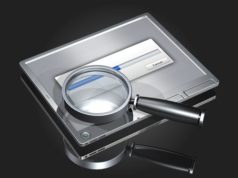
What is Anti Virus Software?
Anti-Virus Software is a form of computer program that is used to prevent, detect and subsequently remove various forms of malware, including computer viruses, computer worms, Trojan horses, adware, and spyware.
Anti-virus software may be purchased and installed or downloaded from the Internet to disinfect a user’s computer.
Anti-virus software will incorporate various programs and techniques to identify the presence of malicious software or computer viruses. These forms of software may damage a computer or compromise personal information stored on a system.
What is Malware?
Malware, which is short for malicious software, is a type of software that is specifically designed to harm or infiltrate a computer system without the owner or user’s informed consent. Malware will incorporate a variety of computer viruses or specific program inhibitors, such as generic computer viruses, Trojan horses, worms, spyware, scareware, and adware. Malware is regarded as the most common mechanism to initiate Internet crime.
What is a Computer Virus?
A computer virus is a computer program that infects an operating system or computer. The term “virus” is held separately from other types of malware, including adware and spyware programs that do not possess the reproductive ability of a computer virus. A traditional computer virus can spread from one computer or system to another (the virus is spread in some form of executable code) particularly when its host is taken to the target computer. For instance, if the virus is uploaded through a removable medium, such as a floppy disc, a DVD, a USB drive, or a CD.
Anti-Virus Identification Methods
To identify the presence of malicious software on a computer platform, an anti-virus program will institute an assortment of techniques and technologies to pinpoint abnormal or disruptive behavior.
Signature-based detection is the most generic identification method incorporated by an anti-virus program. To identify malicious software and computer viruses, anti-virus software will compare the contents of a file to a dictionary of virus signatures. Due to the fact that viruses can be latent in existing files, the entire file is searched as a whole and in fragments. As new viruses are being created each day, the signature-based detection approach requires constant updates of the virus signature dictionary.
To achieve constant and thorough updates, anti-virus software companies will typically allow the user to upload new variants to the software, allowing new viruses to be analyzed and the attached signature to be added to the dictionary.
As a result of the different forms of viruses that can be placed on a computer, a variety of strategies are typically employed in a basic Anti-Virus software program. A signature-based detection anti-virus program will incorporate a search of the system’s hardware. The search is performed to evaluate known patterns of data within executable codes. That being said, this form of anti-virus software is susceptible to newer malware for which no signature is known.
To counter this problem (known as zero-day threats) forms of anti-virus software, known as heuristics, can be employed. A generic signature, a type of heuristic approach, can effectively identify new computer viruses or variations of existing viruses by searching the system for malicious code or variations of such code.
Another type of Heuristic-based detection system incorporated by anti-virus software is file emulation. This process involves executing a program in a virtual environment and logging specific actions the program performs. Depending on the actions present, the anti-virus software can determine if the program is malicious or not. If the anti-virus software finds malicious programming it will carry out appropriate disinfection actions.






















